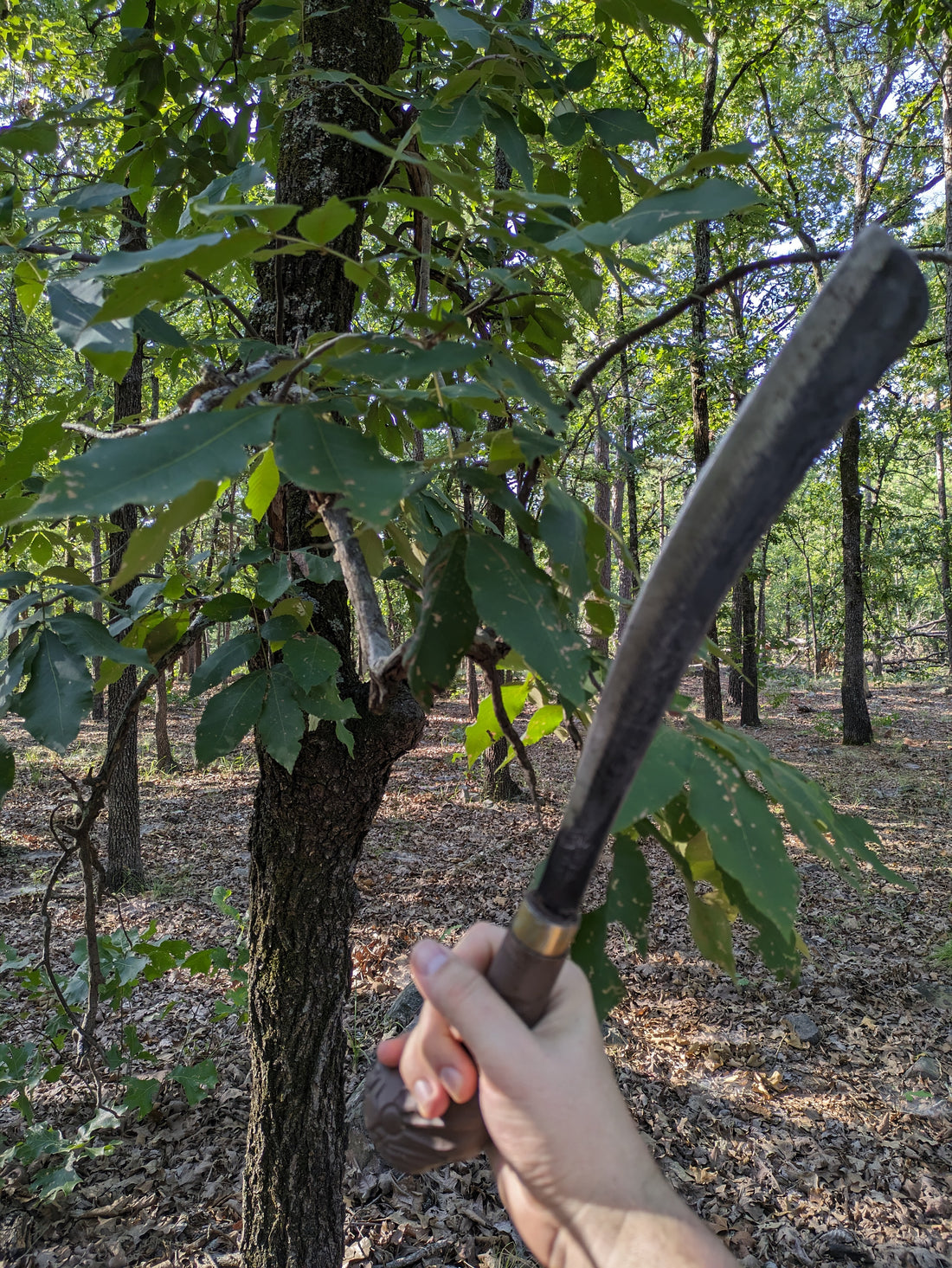Introduction
The parang machete, originating from Southeast Asia, is a versatile tool known for tasks such as brush clearance, wood chopping, and a generalist survival tool. However, it's imperative to prioritize safety due to its potential for harm. This is especially crucial in rugged terrains where the machete's capabilities shine.
Where would you use a machete?
Parang machetes excel in densely vegetated landscapes like jungles and forests, making them a prime choice for tasks like brush clearing and wood chopping. The challenging terrain calls for adaptable tools, and the parang's design rises to the occasion. It's worth noting that due to the nature of these terrains, safety precautions becomes even more crucial. At the end of the day you're swinging around a lengthy, razor sharp blade... be careful!
Prioritizing Safety with Parang Machetes
Parangs (and all machetes) are sharp, so it's vital to exercise caution when out in the woods and jungles using them. Here are some imperative safety precautions to consider:
- Swing Away: Think about the direction of your swing, and make sure the blade is always moving away from your body. Most often you want to be swinging from the center of your body outward, never across or straight up and down. Considering the angle and direction of the blade movement is the easiest way to avoid accidents.
- Maintain Blade Sharpness: A keen blade is safer than a dull one, as it reduces the risk of slipping and potential injuries. Sharped blades will "bite" into wood, preventing glancing blows, while a dull blade may bounce and become unpredictable.
- Avoid Prying or Levering: Refrain from using the machete as a prying or levering tool, as this can harm the blade and increase its likelihood of breaking. Most Parang and other machetes are made of spring steel that will likely warp and bend before it breaks. This is a quick way to turn a great tool into a scrap metal.
- Environment Awareness: Always remain vigilant of your surroundings. This one should be obvious, but stay aware of your environment and those around you! Swinging sharp metal is dangerous; clear the work area of people and animals before using your parang.
- Rest, Attention, Sobriety: Working out in woods, fields, jungles, and outdoors in general can quickly get exhausting, particularly in hot weather. Give yourself breaks and rest! A tired swing is a dangerous one. Obviously, using any sharp or pointy tool after a few drinks is a bad idea as well.
In Closing
Observing these safety measures is paramount to averting accidents while employing a parang machete. While the parang is an amazing jack-of-all-trades type tool, many times a saw or axe might be a safer or easier option for the same tasks. That said, in cultures where Parangs and other long bladed tools are part of daily life, there's not much that can't be done with one. It's all about practice and awareness.
Bonus Tips:
- Seek Training: If you're new to handling a parang machete, numerous bushcraft and survival schools offer beginner-friendly lessons on the safe use of bladed tools. Additionally, there's a wealth of online resources available.
- Familiarize with Regulations: Understand the legal parameters in your region governing parang machete usage. Certain areas might impose limitations on machete types and sizes.
Embrace the power of the parang machete while respecting its potential risks. By doing so, you'll make your ventures into rugged terrains not only efficient but safe as well.

